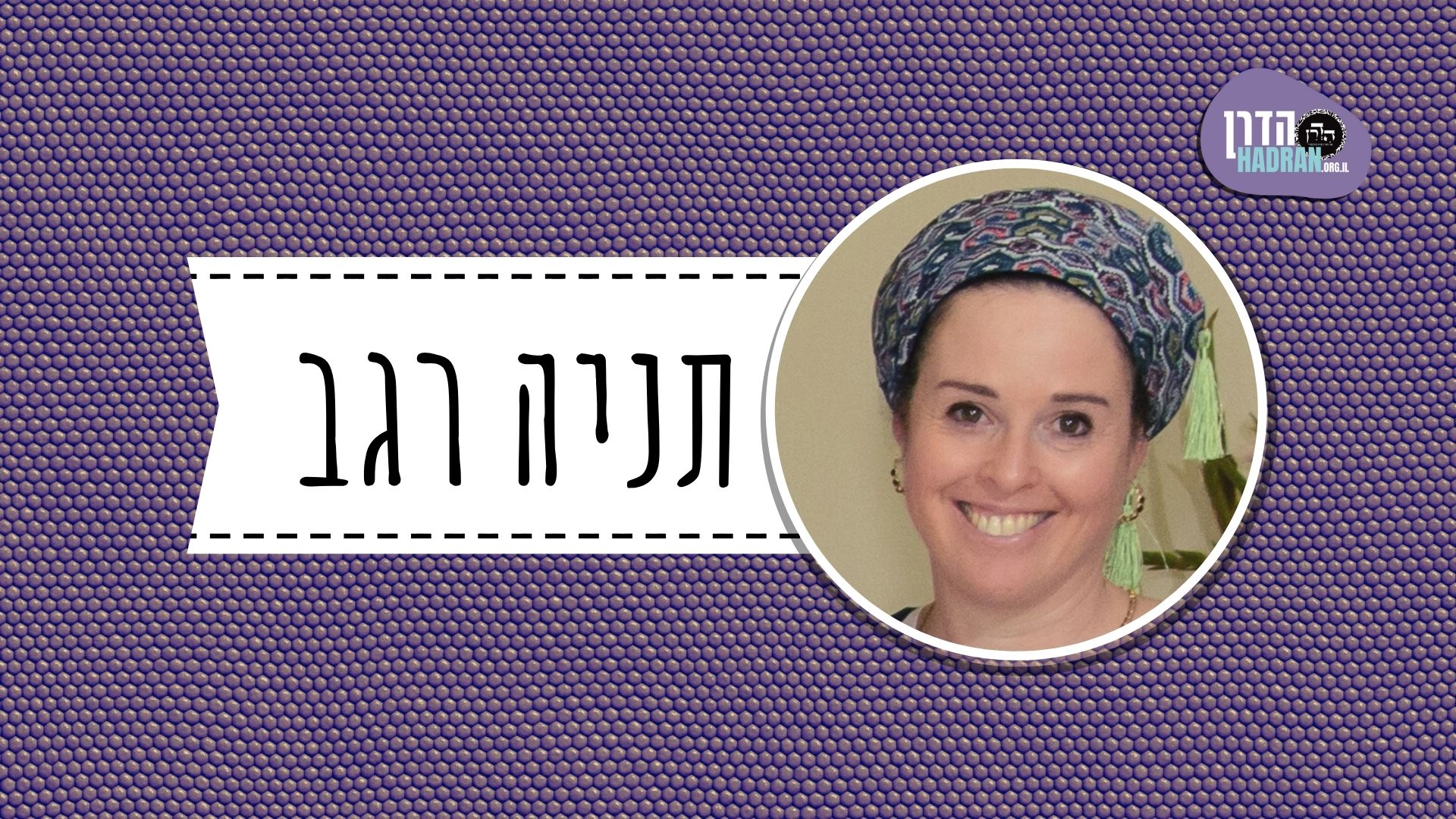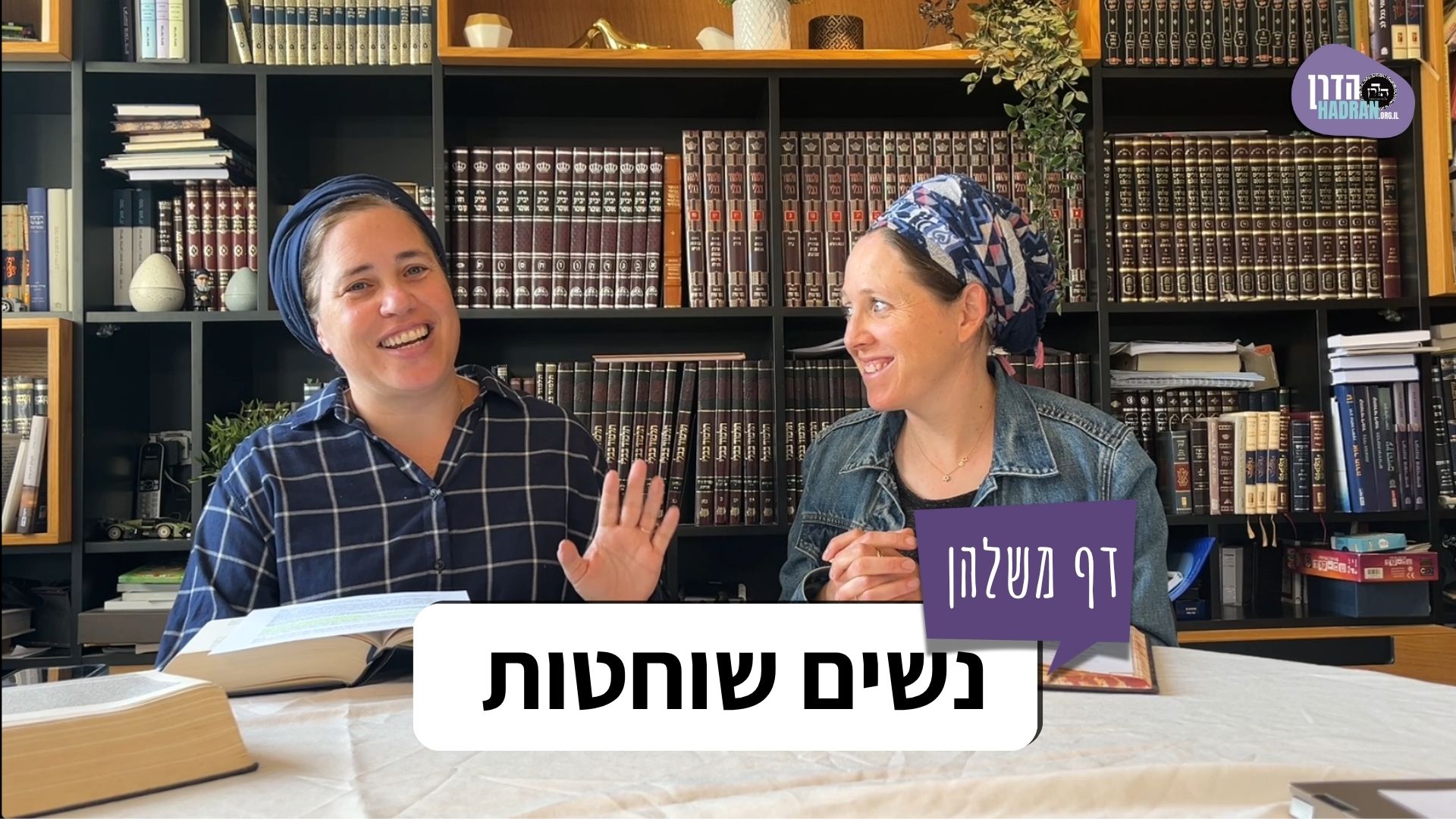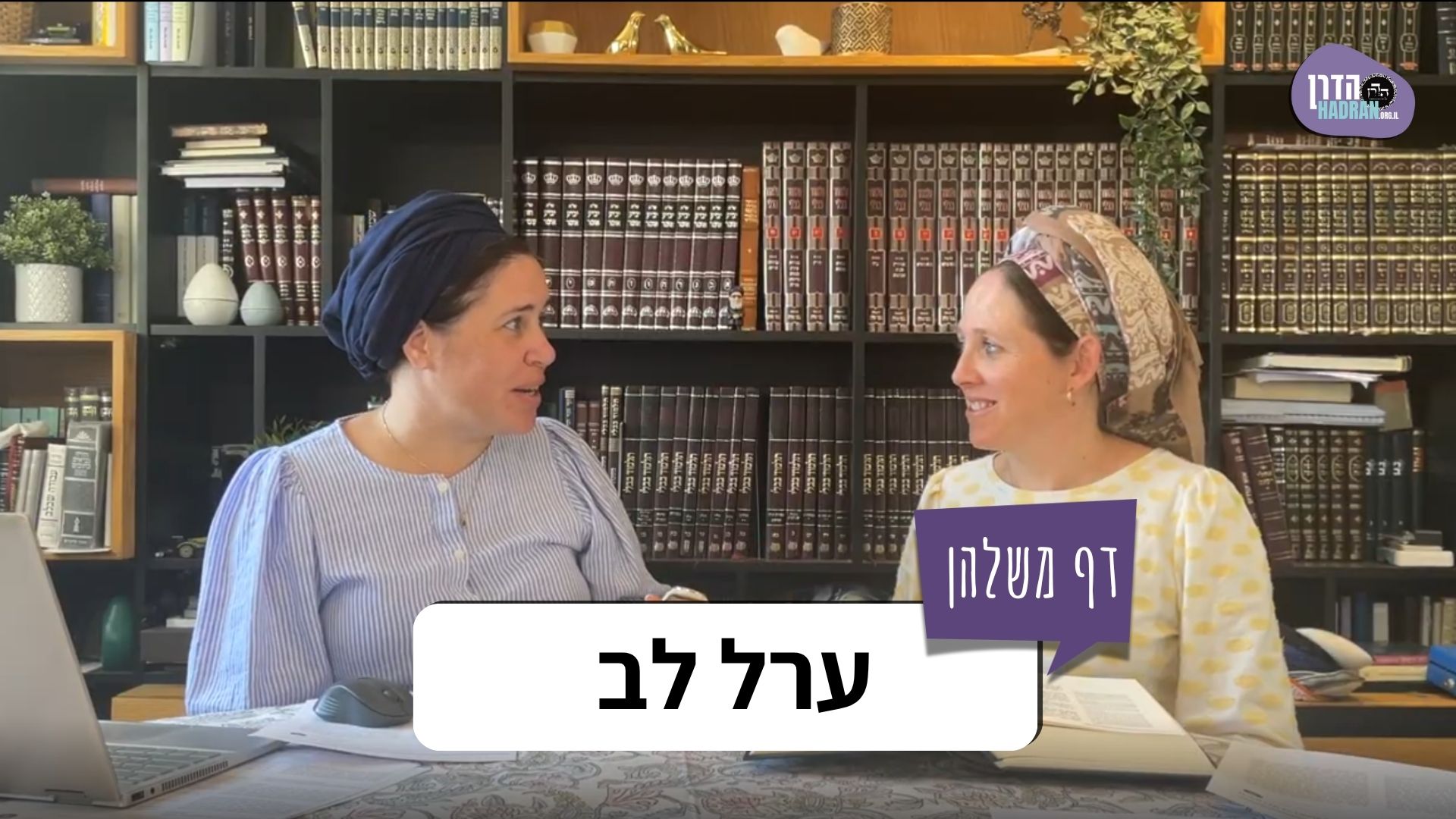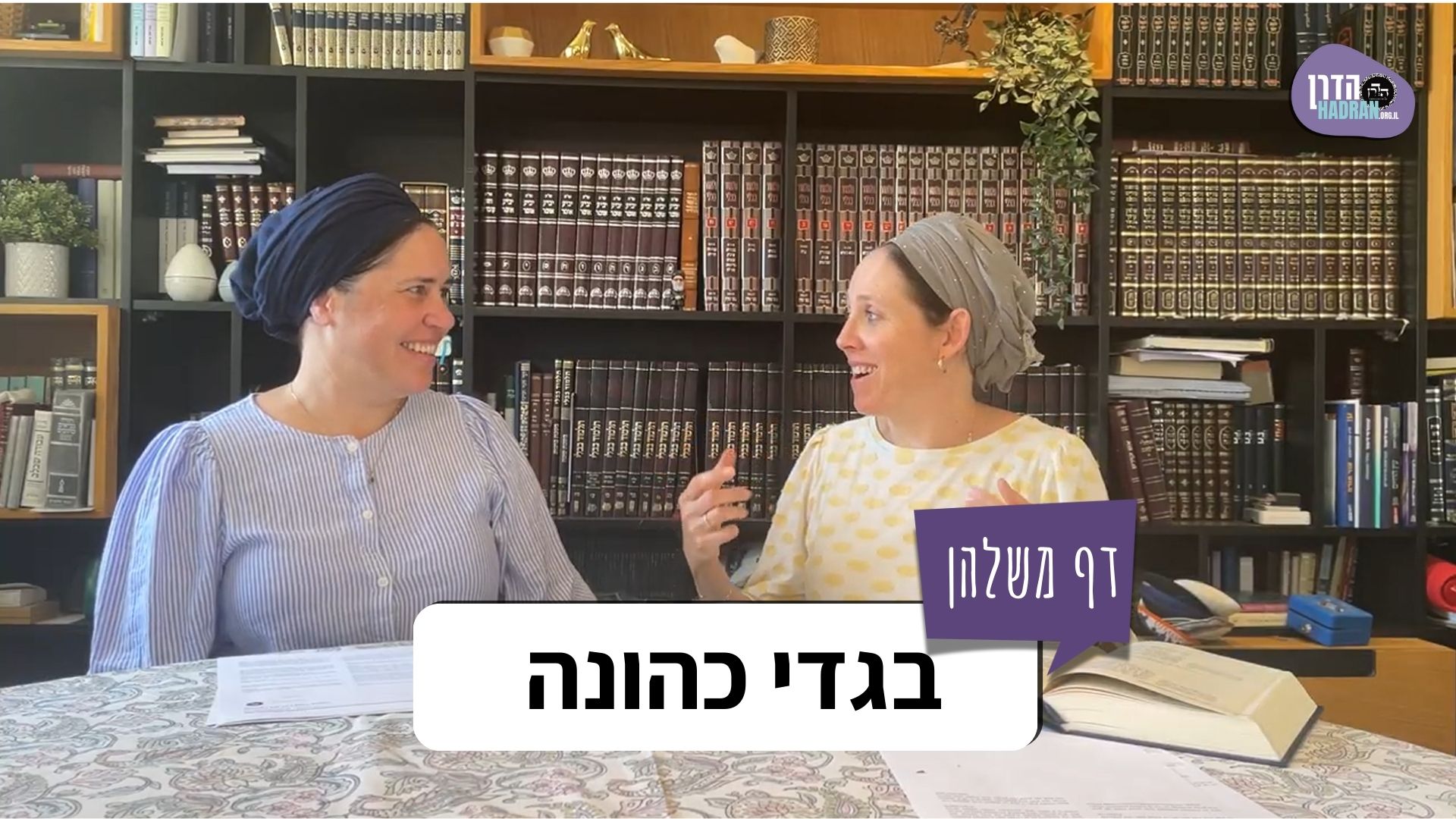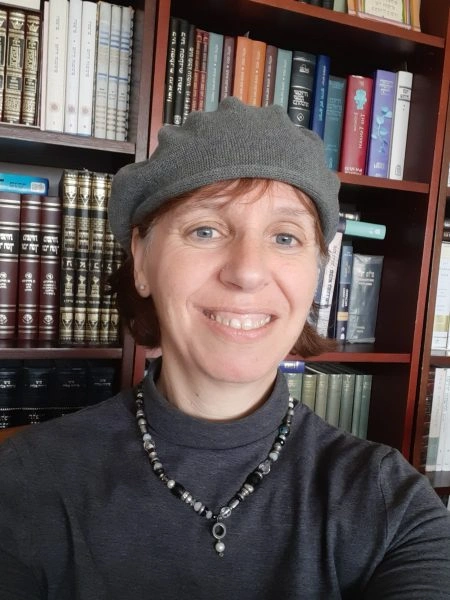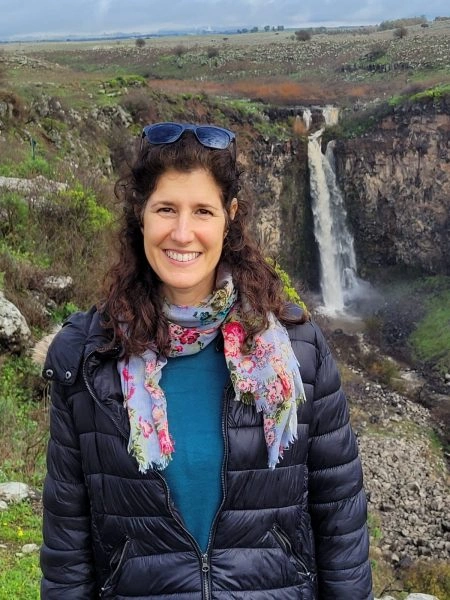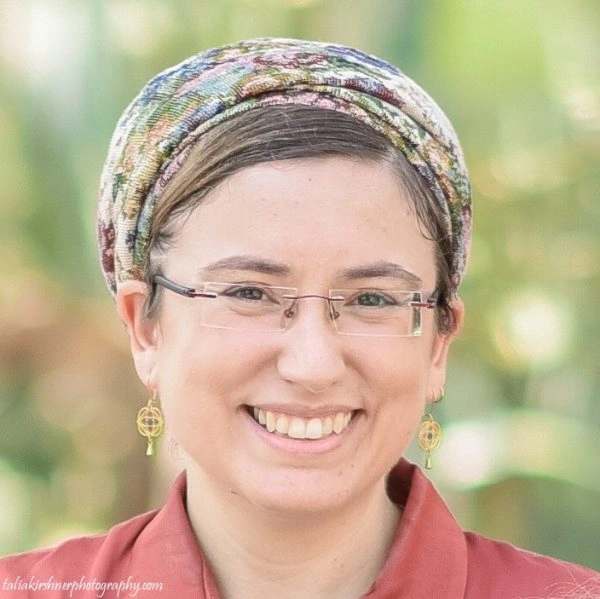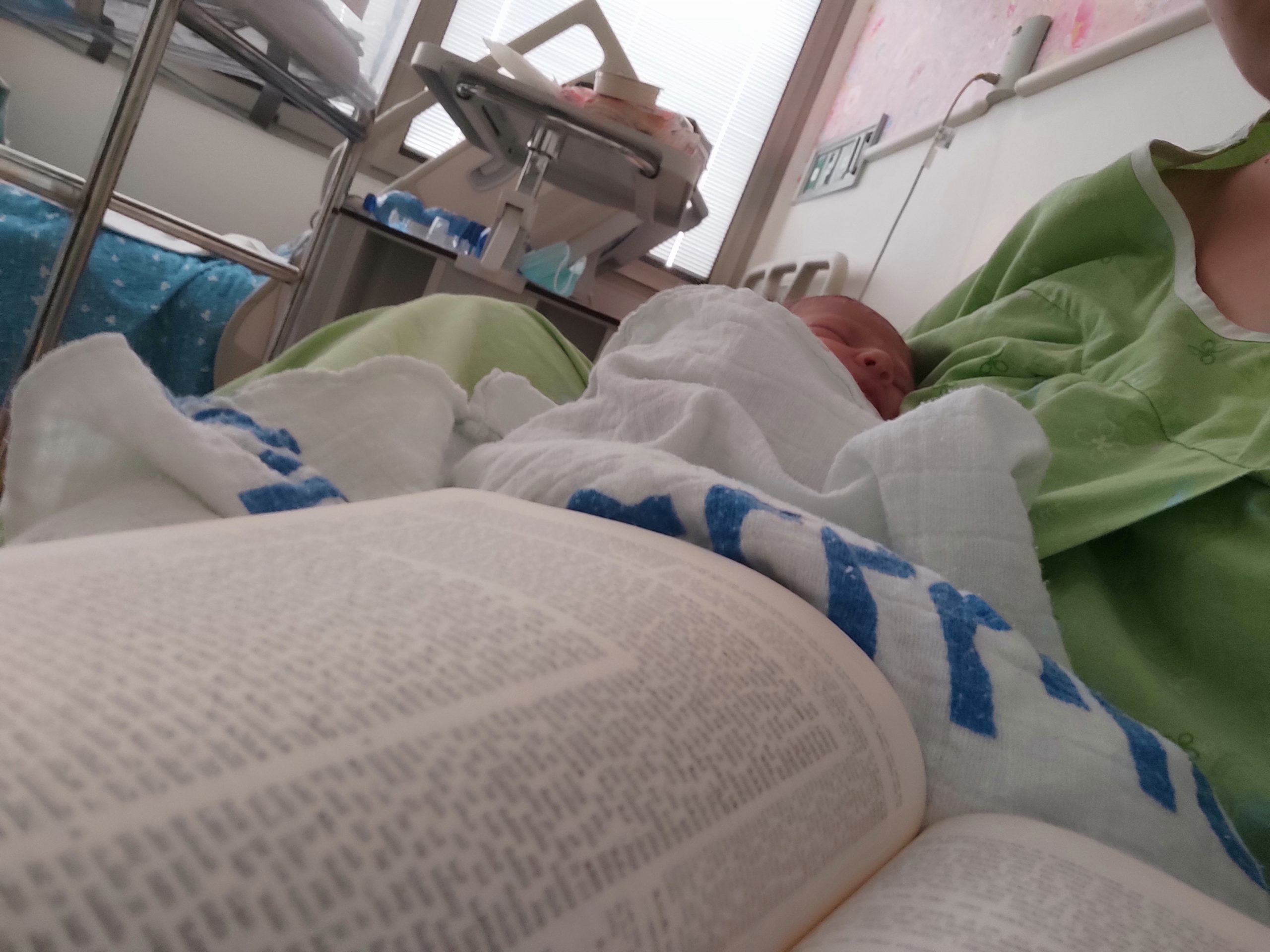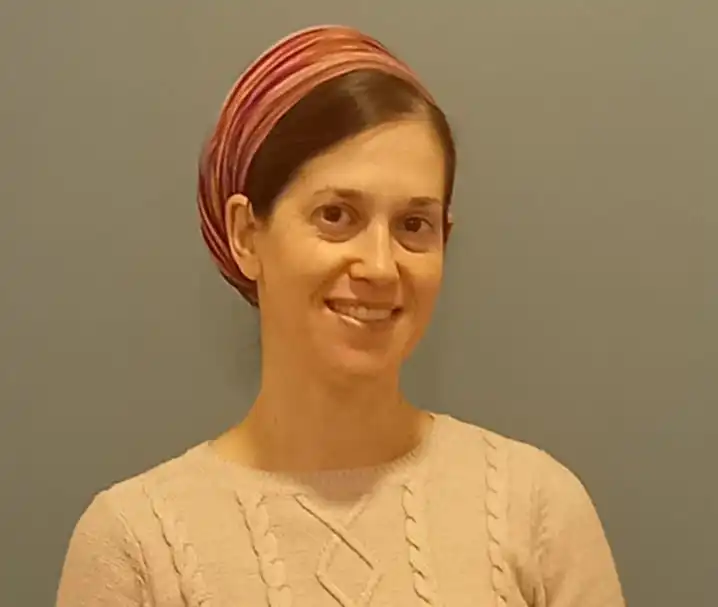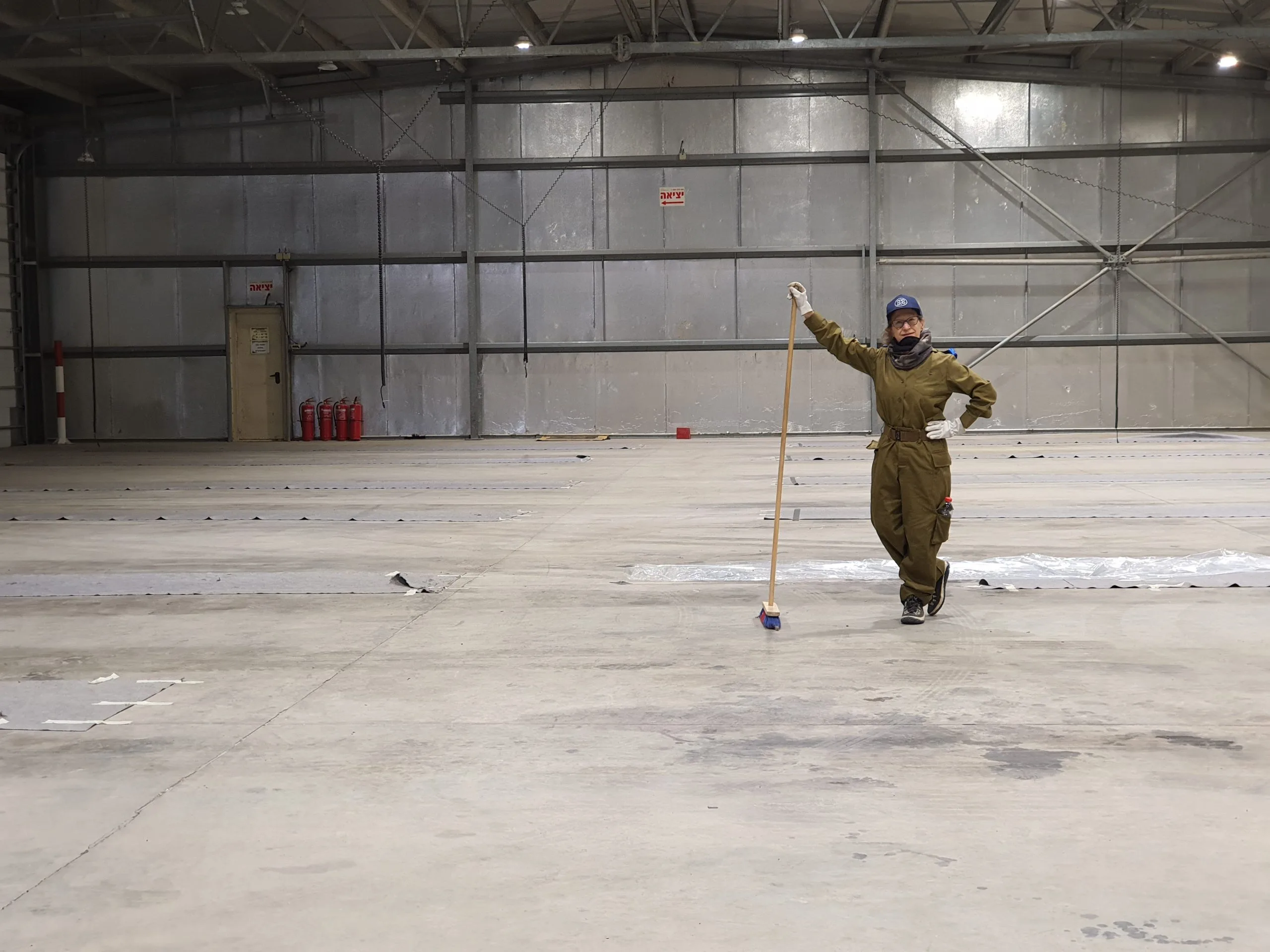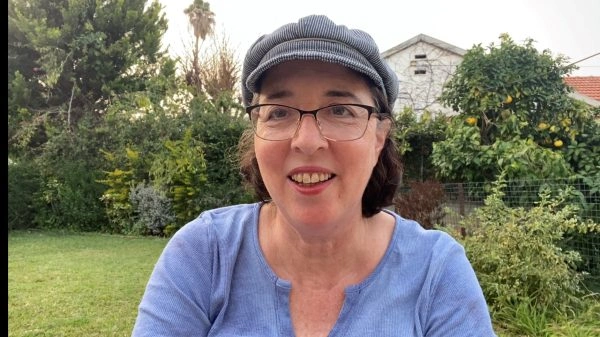מסכת זבחים
מסכת זבחים מוקדש ע”י אסתר קרמר לע”נ אביה מני גרוס.
הלימוד השבוע מוקדש ע”י רוברט ופאולה כהן לע”נ יוסף בן משה הכהן ז”ל. יוסף היה חזן שאהב מאוד לשיר, עבד קשה בחייו והיה מאוד מסור למשפחתו ולקהילה.
רוצה להקדיש שיעור?

תקציר
הגמרא בוחנת שיטות שונות של דרישת הלכה, כגון היקש, גזירה שווה, קל וחומר ובניין אב, בהקשר לדיני קדשים בלבד. היא מעלה את השאלה: האם ניתן ללמוד דין בקדשים באמצעות אחת מהשיטות הללו, ואז להמשיך ולגזור ממנו דין נוסף – באותה שיטה או בשיטה אחרת? הגמרא סוקרת כל אפשרות באופן שיטתי, ומביאה ראיות מהכתובים ונימוקים לוגיים כדי לבחון את תקפותן ואת גבולותיהן של דרשות מורכבות כאלה.
כלים
מסכת זבחים
מסכת זבחים מוקדש ע”י אסתר קרמר לע”נ אביה מני גרוס.
הלימוד השבוע מוקדש ע”י רוברט ופאולה כהן לע”נ יוסף בן משה הכהן ז”ל. יוסף היה חזן שאהב מאוד לשיר, עבד קשה בחייו והיה מאוד מסור למשפחתו ולקהילה.
כלים
העמקה
רוצה להבין מה באמת קורה מתחת לפני השטח של הסוגיה?
שיעורים, פודקאסטים והרחבות של מיטב המורות שלנו יפתחו לך עוד זוויות וכיווני חשיבה.
חדשה בלימוד הגמרא?
זה הדף הראשון שלך? איזו התרגשות עצומה! יש לנו בדיוק את התכנים והכלים שיעזרו לך לעשות את הצעדים הראשונים ללמידה בקצב וברמה שלך, כך תוכלי להרגיש בנוח גם בתוך הסוגיות המורכבות ומאתגרות.
פסיפס הלומדות שלנו
גלי את קהילת הלומדות שלנו, מגוון נשים, רקעים וסיפורים. כולן חלק מתנועה ומסע מרגש ועוצמתי.
זבחים נ
מִדְּתָנָא דְּבֵי רַבִּי יִשְׁמָעֵאל.
is apparent from that which the school of Rabbi Yishmael taught, discussed in the previous chapter (41a).
דָּבָר הַלָּמֵד בְּהֶיקֵּשׁ, מַהוּ שֶׁיְּלַמֵּד בְּבִנְיַן אָב? אָמַר רַבִּי יִרְמְיָה: לָא לִכְתּוֹב צָפוֹנָה בְּאָשָׁם, וְתֵיתֵי מִבִּנְיַן אָב מֵחַטָּאת; לְמַאי הִלְכְתָא כַּתְבֵיהּ? לָאו לְמֵימְרָא דְּדָבָר הַלָּמֵד בְּהֶיקֵּשׁ אֵין חוֹזֵר וּמְלַמֵּד בְּבִנְיַן אָב?
The Gemara asks: What is the halakha as to whether a matter derived via a juxtaposition can teach its halakha in another context via a paradigm? Rabbi Yirmeya says: It must be that it cannot, as, if it could, let the Torah not write the requirement to slaughter an offering in the north of the Temple courtyard with regard to a guilt offering (see Leviticus 14:13), and one can derive it via a paradigm from the halakha of a sin offering, since they are both offerings of the most sacred order. For what halakha did the verse write it with regard to a guilt offering as well? Is this not to say that a matter derived via a juxtaposition cannot then teach its halakha in another context via a paradigm?
וְלִיטַעְמָיךְ, תֵּיתֵי מִבִּנְיַן אָב מֵעוֹלָה! מַאי טַעְמָא לָא אָתֵי – מִשּׁוּם דְּאִיכָּא לְמִיפְרַךְ: מָה לְעוֹלָה שֶׁכֵּן כָּלִיל; חַטָּאת נָמֵי אִיכָּא לְמִיפְרַךְ: מָה לְחַטָּאת שֶׁכֵּן מְכַפֶּרֶת עַל חַיָּיבֵי כָרֵיתוֹת.
The Gemara questions this proof: But according to your reasoning, why not derive the halakha that a guilt offering must be slaughtered in the north from the halakha of a burnt offering, via a paradigm? What is the reason that this halakha is not derived from there? It must be because it can be refuted with the following claim: What is notable about a burnt offering? It is notable in that the Torah teaches that it is entirely burned on the altar, which is not so with regard to a guilt offering. The Gemara now states its objection: In that case, the derivation from a sin offering via a paradigm can also be refuted: What is notable about a sin offering? It is notable in that it atones for those sins liable for punishment by karet, which is not so with regard to a guilt offering. If so, there is no proof from here.
חֲדָא מֵחֲדָא – לָא אָתְיָא; תֵּיתֵי חֲדָא מִתַּרְתֵּי!
The Gemara suggests an alternative paradigm: Although the requirement to slaughter one of these three offerings, i.e., a burnt offering, sin offering, or guilt offering, in the north cannot be derived from any one of the others, one can derive the halakha concerning one of them from the other two.
מֵהֵי תֵּיתֵי? לָא נִכְתּוֹב רַחֲמָנָא עוֹלָה, וְתֵיתֵי מֵחַטָּאת וְאָשָׁם? מָה לְהָנָךְ שֶׁכֵּן מְכַפְּרִין.
The Gemara clarifies: From which two could one derive the third? Let the Merciful One not write the requirement to slaughter the offering in the north with regard to a burnt offering, and derive this halakha from the halakhot of a sin offering and a guilt offering. The Gemara refutes this derivation: What is notable about these two offerings? They are notable in that they atone for transgressions, whereas a burnt offering does not atone for any sin.
לָא נִכְתּוֹב רַחֲמָנָא בְּחַטָּאת, וְתֵיתֵי מֵהָנָךְ? מָה לְהָנָךְ שֶׁכֵּן זְכָרִים.
The Gemara suggests: Let the Merciful One not write the requirement to slaughter an offering in the north with regard to a sin offering, and derive this halakha from the halakhot of these others, the burnt offering and the guilt offering. The Gemara refutes this derivation: What is notable about these two offerings? They are notable in that they are brought only from male animals, whereas an individual’s sin offering is a female animal.
לָא נִכְתּוֹב בְּאָשָׁם, וְתֵיתֵי מֵהָנָךְ? מָה לְהָנָךְ שֶׁכֵּן יֶשְׁנָן בְּצִיבּוּר כִּבְיָחִיד.
The Gemara suggests: Let the Merciful One not write the requirement to slaughter an offering in the north with regard to a guilt offering, and derive this halakha from the halakhot of these other two. The Gemara refutes this derivation: What is notable about these two offerings? They are notable in that they are brought by a community just as they are brought by an individual, whereas a guilt offering can be brought only by an individual.
דָּבָר הַלָּמֵד בִּגְזֵירָה שָׁוָה, מַהוּ שֶׁיְּלַמֵּד בְּהֶיקֵּשׁ? אָמַר רַב פָּפָּא: ״וְזֹאת תּוֹרַת זֶבַח הַשְּׁלָמִים [וְגוֹ׳] אִם עַל תּוֹדָה״ – לָמַדְנוּ לְתוֹדָה שֶׁבָּא מִן הַמַּעֲשֵׂר, מִדְּאַשְׁכְּחַן שְׁלָמִים דְּאָתוּ מִמַּעֲשֵׂר.
The Gemara returns to its discussion of hermeneutical principles. What is the halakha as to whether a matter derived via a verbal analogy can teach its halakha to another matter via a juxtaposition? Rav Pappa says: The verse states: “And this is the law of the sacrifice of peace offerings, which one may offer to the Lord. If he sacrifices it for a thanks offering, then he shall offer with the thanks offering unleavened cakes mingled with oil, and unleavened wafers spread with oil, and cakes mingled with oil, of fine flour soaked” (Leviticus 7:11–12). From this juxtaposition we have learned that the money to purchase a thanks offering can come from money used to redeem the second tithe, since we find that the money to purchase a peace offering can come from money used to redeem the second tithe.
שְׁלָמִים גּוּפַיְיהוּ מְנָא לַן? דִּכְתִיב ״שָׁם״–״שָׁם״.
The Gemara asks: From where do we derive that the money to purchase peace offerings themselves can come from money used to redeem the second tithe? As it is written with regard to peace offerings: “And you shall sacrifice peace offerings and shall eat there” (Deuteronomy 27:7). And it is written with regard to second tithe: “And you shall eat before the Lord your God, in the place which He shall choose to cause His name to dwell there” (Deuteronomy 14:23). The usage of the term “there” in both passages serves as a verbal analogy, and demonstrates that a halakha derived via a verbal analogy, that of a peace offering, can then teach a halakha via its juxtaposition to a thanks offering.
אֲמַר לֵיהּ מָר זוּטְרָא בְּרֵיהּ דְּרַב מָרִי לְרָבִינָא: מַעְשַׂר דָּגָן חוּלִּין בְּעָלְמָא הוּא!
Mar Zutra, son of Rav Mari, said to Ravina: This is not a proof, because the tithe of grain, including the second tithe, is merely non-sacred. Therefore, it cannot be used to prove that in the realm of consecrated matters a halakha derived via a verbal analogy can teach a halakha via a juxtaposition.
אֲמַר לֵיהּ, אָמַר אָמְרַהּ: לָמֵד קֹדֶשׁ וּמְלַמֵּד קֹדֶשׁ?!
Ravina said to him: Does the one who said that in the realm of consecrated matters a halakha derived via one of the hermeneutical principles cannot teach via another of those principles say this only when the halakha that is derived is in the realm of consecrated matters and the halakha that teaches is in the realm of consecrated matters as well? He holds that even if that which is derived is in the realm of consecrated matters it cannot teach its halakha via one of the hermeneutical principles. Therefore, since peace offerings are in the realm of consecrated matters, the halakha derived from the juxtaposition of thanks offerings to peace offerings serves as a source that a matter derived via a verbal analogy can teach its halakha to another matter via a juxtaposition.
דָּבָר הַלָּמֵד בִּגְזֵירָה שָׁוָה, מַהוּ שֶׁיְּלַמֵּד בִּגְזֵירָה שָׁוָה? אָמַר רָמֵי בַּר חָמָא, תַּנְיָא: ״סֹלֶת מֻרְבֶּכֶת״ – לָמַדְנוּ לִרְבוּכָה שֶׁבָּאָה סוֹלֶת.
§ The Gemara asks: What is the halakha as to whether a matter derived via a verbal analogy can teach its halakha to another matter via another verbal analogy? Rami bar Ḥama says: It is taught in a baraita with regard to the types of bread that accompany a thanks offering: “If he sacrifices it for a thanks offering, then he shall sacrifice with the thanks offering unleavened loaves mingled with oil, and unleavened wafers spread with oil, and loaves mingled with oil, of fine flour cooked with oil” (Leviticus 7:12). We have derived from here that the poached breads accompanying the thanks offering come from fine flour.
חַלּוֹת מִנַּיִין? תַּלְמוּד לוֹמַר: ״חַלּוֹת״–״חַלּוֹת״. רְקִיקִין מִנַּיִין? תַּלְמוּד לוֹמַר: ״מַצּוֹת״–״מַצּוֹת״.
The baraita continues: From where is it derived that the loaves accompanying a thanks offering are also prepared with fine flour? The verse states: “Loaves mingled with oil, of fine flour cooked with oil” (Leviticus 7:12), and it also states in the same verse: “Unleavened loaves mingled with oil.” From where is it derived that the unleavened wafers accompanying a thanks offering are also prepared with fine flour? The verse states: “Unleavened cakes mingled with oil” (Leviticus 7:12), and the verse also states: “Unleavened wafers spread with oil.” The baraita derives via a verbal analogy that the unleavened loaves mingled with oil are prepared with fine flour, and then teaches the halakha concerning unleavened wafers using a verbal analogy from the halakha of unleavened loaves.
אֲמַר לֵיהּ רָבִינָא: מִמַּאי דְּ״מַצּוֹת״–״מַצּוֹת״ מֵחַלּוֹת גָּמַר? דִּלְמָא מִמַּאֲפֵה תַנּוּר גָּמַר!
Ravina said to Rami bar Ḥama: From where do you know that the tanna of the baraita learns the verbal analogy of “unleavened” and “unleavened” from loaves of the thanks offering? Perhaps the tanna learns the verbal analogy from the word “unleavened” stated with regard to meal offerings baked in an oven, about which the verse states explicitly that they are prepared with fine flour: “And when you bring a meal offering baked in the oven, it shall be unleavened cakes of fine flour mingled with oil, or unleavened wafers spread with oil” (Leviticus 2:4). If so, there is no source that a halakha derived via a verbal analogy can teach a halakha via a verbal analogy.
אֶלָּא אָמַר רָבָא, תַּנְיָא: ״וְקִרְבּוֹ וּפִרְשׁוֹ וְהוֹצִיא״ – מְלַמֵּד שֶׁמּוֹצִיאוֹ שָׁלֵם.
Rather, Rava says that the source is from a different baraita, as it is taught in a baraita with regard to the bull offering of a High Priest: “And the skin of the bull and all its flesh, with its head and with its legs, and its innards, and its dung, the whole bull shall he carry out of the camp to a pure place, where the ashes are poured out, and burn it on wood with fire” (Leviticus 4:11–12). This teaches that he brings the offering out whole.
יָכוֹל יִשְׂרְפֶנּוּ שָׁלֵם? נֶאֱמַר כָּאן: ״רֹאשׁוֹ וּכְרָעָיו״, וְנֶאֱמַר לְהַלָּן: ״רֹאשׁוֹ וּכְרָעָיו״; מָה לְהַלָּן עַל יְדֵי נִיתּוּחַ, אַף כָּאן עַל יְדֵי נִיתּוּחַ.
The baraita continues: One might have thought that he should burn it whole as well. It is stated here: “Its head and its legs,” and it is stated there, with regard to a burnt offering: “And he shall cut it into its pieces; and the priest shall lay them, with its head and its fats, in order on the wood that is on the fire which is upon the altar. But the innards and the legs shall he wash with water” (Leviticus 1:12–13). Just as there, the burnt offering is burned by means of cutting the offering into pieces, as explicitly stated in the verse, so too here, it is burned by means of cutting the offering into pieces.
אִי – מָה לְהַלָּן בְּהֶפְשֵׁט, אַף כָּאן נָמֵי בְּהֶפְשֵׁט?! תַּלְמוּד לוֹמַר: ״וְקִרְבּוֹ וּפִרְשׁוֹ״. מַאי תַּלְמוּדָא? אָמַר רַב פָּפָּא: כְּשֵׁם שֶׁפִּרְשׁוֹ בְּקִרְבּוֹ, כָּךְ בְּשָׂרוֹ בְּעוֹרוֹ.
The Gemara clarifies: If these are compared, one could say that just as there, the burnt offering is prepared for being burned by first flaying it, so too here, the bull offering of a High Priest should also be prepared for being burned by first flaying it. To counter this reasoning, the verse states: “And its innards and its dung” (Leviticus 4:11). The Gemara asks: What is the biblical derivation? How do these words teach that there is no requirement to flay the animal? Rav Pappa says: Just as the dung remains inside the animal when the animal is burned, so the animal’s flesh remains inside its skin. In any event, the halakha that the bull offering of a High Priest is cut into pieces before it is burned is derived via a verbal analogy.
וְתַנְיָא, רַבִּי אוֹמֵר: נֶאֱמַר כָּאן עוֹר וּבָשָׂר [וָפֶרֶשׁ],
Rava continues: And it is taught in a baraita that Rabbi Yehuda HaNasi says: It is stated here, with regard to the bull and goat offered by the High Priest on Yom Kippur, the terms skin, flesh, and dung, in the verse: “And the bull of the sin offering, and the goat of the sin offering, whose blood was brought in to make atonement in the Sanctuary, shall be carried out of the camp; and they shall burn in the fire their skin, and their flesh, and their dung” (Leviticus 16:27).
וְנֶאֱמַר לְהַלָּן עוֹר וּבָשָׂר וָפֶרֶשׁ; מָה לְהַלָּן – עַל יְדֵי נִיתּוּחַ שֶׁלֹּא בְּהֶפְשֵׁט, אַף כָּאן – עַל יְדֵי נִיתּוּחַ שֶׁלֹּא בְּהֶפְשֵׁט.
And it is stated below, with regard to the bull sin offerings that are burned, the terms skin, flesh, and dung, in the verse: “But the skin of the bull, and all its flesh, with its head, and with its legs, and its innards, and its dung” (Leviticus 4:11). Just as below it is prepared for burning by means of cutting it into pieces but not by means of flaying, as derived by the verbal analogy, so too here it is prepared for burning by means of cutting it into pieces but not by means of flaying. Evidently, a halakha derived via a verbal analogy can then teach another halakha via a verbal analogy.
דָּבָר הַלָּמֵד בִּגְזֵירָה שָׁוָה, מַהוּ שֶׁיְּלַמֵּד בְּקַל וָחוֹמֶר? קַל וָחוֹמֶר: וּמָה הֶיקֵּשׁ, שֶׁאֵינוֹ מְלַמֵּד בְּהֶיקֵּשׁ – אִי מִדְּרָבָא אִי מִדְּרָבִינָא, מְלַמֵּד בְּקַל וָחוֹמֶר מִדְּתָנָא דְּבֵי רַבִּי יִשְׁמָעֵאל; גְּזֵירָה שָׁוָה, הַמְלַמֶּדֶת בְּהֶיקֵּשׁ מִדְּרַב פָּפָּא, אֵינוֹ דִּין שֶׁתְּלַמֵּד בְּקַל וָחוֹמֶר?!
§ The Gemara asks: What is the halakha as to whether a matter derived via a verbal analogy can teach its halakha to another matter via an a fortiori inference? The Gemara answers: That question itself can be answered with an a fortiori inference: And just as a matter derived via a juxtaposition, which cannot then teach its halakha via a juxtaposition, as proven either from the statement of Rava or from the statement of Ravina (49b), can nevertheless teach its halakha via an a fortiori inference, as proven from the statement that the school of Rabbi Yishmael taught (50a), with regard to a matter derived via a verbal analogy, which can teach its halakha via a juxtaposition, as proven from the statement of Rav Pappa (50a), is it not logical that it should teach its halakha via an a fortiori inference?
הָנִיחָא לְמַאן דְּאִית לֵיהּ דְּרַב פָּפָּא; אֶלָּא לְמַאן דְּלֵית לֵיהּ דְּרַב פָּפָּא, מַאי אִיכָּא לְמֵימַר?
The Gemara clarifies: This works out well according to the one who accepts the statement of Rav Pappa. But according to the one who does not accept the statement of Rav Pappa, i.e., Mar Zutra, son of Rav Mari, what is there to say?
אֶלָּא קַל וָחוֹמֶר: וּמָה הֶיקֵּשׁ, שֶׁאֵין מְלַמֵּד בְּהֶיקֵּשׁ – אִי מִדְּרָבָא אִי מִדְּרָבִינָא, מְלַמֵּד בְּקַל וָחוֹמֶר מִדְּתָנָא דְּבֵי רַבִּי יִשְׁמָעֵאל; גְּזֵירָה שָׁוָה, הַמְלַמֶּדֶת בִּגְזֵירָה שָׁוָה חֲבֶירְתָּהּ – מִדְּרָמֵי בַּר חָמָא, אֵינוֹ דִּין שֶׁתְּלַמֵּד בְּקַל וָחוֹמֶר?!
Rather, this can be derived through a different a fortiori inference: And just as a matter derived via a juxtaposition, which cannot then teach its halakha via a juxtaposition, as proven either from the statement of Rava or from the statement of Ravina (49b), can nevertheless teach its halakha via an a fortiori inference, as proven from the statement that the school of Rabbi Yishmael taught (50a), with regard to a matter derived via a verbal analogy, which can teach its halakha via another verbal analogy, as proven from the statement of Rami bar Ḥama (50a), is it not logical that it should teach its halakha via an a fortiori inference?
דָּבָר הַלָּמֵד בִּגְזֵירָה שָׁוָה, מַהוּ שֶׁיְּלַמֵּד בְּבִנְיַן אָב? תֵּיקוּ.
The Gemara asks: What is the halakha as to whether a matter derived via a verbal analogy can teach its halakha to another matter via a paradigm? The question shall stand unresolved.
דָּבָר הַלָּמֵד בְּקַל וָחוֹמֶר, מַהוּ שֶׁיְּלַמֵּד בְּהֶיקֵּשׁ? קַל וָחוֹמֶר: וּמָה גְּזֵירָה שָׁוָה, שֶׁאֵינָהּ לְמֵדָה בְּהֶיקֵּשָׁא מִדְּרַבִּי יוֹחָנָן – מְלַמֵּד בְּהֶיקֵּשׁ מִדְּרַב פָּפָּא; קַל וָחוֹמֶר, הַלָּמֵד מֵהֶיקֵּשׁ מִדְּתָנָא דְּבֵי רַבִּי יִשְׁמָעֵאל – אֵינוֹ דִּין שֶׁיְּלַמֵּד בְּהֶיקֵּשׁ?!
§ The Gemara asks: What is the halakha as to whether a matter derived via an a fortiori inference can teach its halakha to another matter via a juxtaposition? The Gemara answers that this itself can be derived via an a fortiori inference: And just as a halakha derived via a verbal analogy, which cannot be derived from another halakha derived via a juxtaposition, as proven from the statement of Rabbi Yoḥanan (49b), can nevertheless teach its halakha to another matter via a juxtaposition, as proven from the statement of Rav Pappa (50a), with regard to a halakha derived via an a fortiori inference, which can be derived from another halakha derived via a juxtaposition, as proven from the statement that the school of Rabbi Yishmael taught (50a), is it not logical that it should teach its halakha via a juxtaposition?
הָנִיחָא – לְמַאן דְּאִית לֵיהּ דְּרַב פָּפָּא; אֶלָּא לְמַאן דְּלֵית לֵיהּ דְּרַב פָּפָּא, מַאי אִיכָּא לְמֵימַר? תֵּיקוּ.
The Gemara clarifies: This works out well according to the one who accepts the statement of Rav Pappa. But according to the one who does not accept the statement of Rav Pappa, i.e., Mar Zutra, son of Rav Mari, what is there to say? The Gemara comments: The question shall stand unresolved.
דָּבָר הַלָּמֵד בְּקַל וָחוֹמֶר, מַהוּ שֶׁיְּלַמֵּד בִּגְזֵירָה שָׁוָה? קַל וָחוֹמֶר: וּמָה גְּזֵירָה שָׁוָה, שֶׁאֵינָהּ לְמֵידָה בְּהֶיקֵּשָׁא מִדְּרַבִּי יוֹחָנָן – מְלַמֵּד בִּגְזֵירָה שָׁוָה מִדְּרָמֵי בַּר חָמָא; קַל וָחוֹמֶר, הַלָּמֵד בְּהֶיקֵּשׁ מִדְּתָנָא דְּבֵי רַבִּי יִשְׁמָעֵאל – אֵינוֹ דִּין שֶׁתְּלַמֵּד בִּגְזֵירָה שָׁוָה?!
The Gemara asks: What is the halakha as to whether a matter derived via an a fortiori inference can teach its halakha to another matter via a verbal analogy? The Gemara answers that this itself can be derived via an a fortiori inference. And just as a halakha derived via a verbal analogy, which cannot be derived from another halakha derived via a juxtaposition, as proven from the statement of Rabbi Yoḥanan (49b), can nevertheless teach its halakha to another matter via a verbal analogy, as proven from the statement of Rami bar Ḥama (50a), with regard to a halakha derived via an a fortiori inference, which can be derived from another halakha derived via a juxtaposition, as proven from the statement that the school of Rabbi Yishmael taught (50a), is it not logical that it should teach its halakha via a verbal analogy?
דָּבָר הַלָּמֵד בְּקַל וָחוֹמֶר, מַהוּ שֶׁיְּלַמֵּד בְּקַל וָחוֹמֶר? קַל וָחוֹמֶר: וּמָה גְּזֵירָה שָׁוָה, שֶׁאֵינָהּ לְמֵידָה בְּהֶיקֵּשׁ מִדְּרַבִּי יוֹחָנָן – מְלַמֵּד בְּקַל וָחוֹמֶר כְּדַאֲמַרַן; קַל וָחוֹמֶר, הַלָּמֵד מֵהֶיקֵּשׁ מִדְּתָנָא דְּבֵי רַבִּי יִשְׁמָעֵאל – אֵינוֹ דִּין שֶׁיְּלַמֵּד בְּקַל וָחוֹמֶר?!
The Gemara asks: What is the halakha as to whether a matter derived via an a fortiori inference can teach its halakha to another matter via an a fortiori inference? The Gemara answers that this itself can be derived via an a fortiori inference. And just as a halakha derived via a verbal analogy, which cannot be derived from another halakha derived via a juxtaposition, as proven from the statement of Rabbi Yoḥanan (49b), can nevertheless teach its halakha to another matter via an a fortiori inference, as we have said, with regard to a halakha derived via an a fortiori inference, which can be derived from another halakha derived via a juxtaposition, as proven from the statement that the school of Rabbi Yishmael taught (50a), is it not logical that it should teach its halakha via an a fortiori inference?
וְזֶהוּ קַל וָחוֹמֶר בֶּן קַל וָחוֹמֶר. בֶּן בְּנוֹ שֶׁל קַל וָחוֹמֶר הוּא!
The Gemara comments: And this is an a fortiori inference that is the son of, i.e., is derived from, another a fortiori inference. The Gemara challenges this last statement: It is not the son of an a fortiori inference, but the grandson of an a fortiori inference, which cannot be used. The very fact that a matter derived via a verbal analogy can then teach its halakha via an a fortiori inference is itself derived from an a fortiori inference, as the Gemara stated.
אֶלָּא קַל וָחוֹמֶר: וּמָה הֶיקֵּשׁ, שֶׁאֵינוֹ לָמֵד בְּהֶיקֵּשׁ – אִי מִדְּרָבָא אִי מִדְּרָבִינָא, מְלַמֵּד בְּקַל וָחוֹמֶר מִדְּתָנָא דְּבֵי רַבִּי יִשְׁמָעֵאל; קַל וָחוֹמֶר, הַלָּמֵד מֵהֶיקֵּשׁ מִדְּתָנֵי דְּבֵי רַבִּי יִשְׁמָעֵאל, אֵינוֹ דִּין שֶׁיְּלַמֵּד בְּקַל וָחוֹמֶר?! וְזֶהוּ קַל וָחוֹמֶר בֶּן קַל וָחוֹמֶר.
Rather, the halakha as to whether a matter derived via an a fortiori inference can teach its halakha to another matter via an a fortiori inference can be derived via another a fortiori inference. And just as a matter derived via a juxtaposition, which cannot be derived via a juxtaposition, as proven either from the statement of Rava or from the statement of Ravina (49b), can nevertheless teach its halakha via an a fortiori inference, as proven from the statement that the school of Rabbi Yishmael taught (50a), with regard to a halakha derived via an a fortiori inference, which can be derived from another halakha derived via a juxtaposition, as proven from the statement that the school of Rabbi Yishmael taught (50a), is it not logical that it should teach its halakha via an a fortiori inference? The Gemara comments: And this is an a fortiori inference that is the son of another a fortiori inference.
דָּבָר הַלָּמֵד בְּקַל וָחוֹמֶר, מַהוּ שֶׁיְּלַמֵּד בְּבִנְיַן אָב? אָמַר רַבִּי יִרְמְיָה, תָּא שְׁמַע: מָלַק וְנִמְצֵאת טְרֵיפָה, רַבִּי מֵאִיר אוֹמֵר: אֵינָהּ מְטַמְּאָה בְּבֵית הַבְּלִיעָה. רַבִּי יְהוּדָה אוֹמֵר: מְטַמְּאָה בְּבֵית הַבְּלִיעָה.
The Gemara asks: What is the halakha as to whether a matter derived via an a fortiori inference can teach its halakha to another matter via a paradigm? Rabbi Yirmeya says: Come and hear a proof from a mishna (69a–b): If a priest pinched the nape of a bird offering properly and it was then found to be a bird with a wound that would have caused it to die within twelve months [tereifa], which disqualifies it from being used as an offering and renders it prohibited for consumption by the priests, Rabbi Meir says: An olive-bulk of its meat does not render one who swallows it ritually impure when it is in the throat, as is the halakha concerning a bird carcass, as the fact that it underwent pinching means that it is not in the category of a carcass. Rabbi Yehuda says: Its status is like that of any other carcass of a kosher bird, and its meat renders one who swallows it ritually impure when it is in the throat.
אָמַר רַבִּי מֵאִיר, קַל וָחוֹמֶר: וּמָה נִבְלַת בְּהֵמָה, שֶׁמְּטַמְּאָה בְּמַגָּע וּבְמַשָּׂא – שְׁחִיטָתָהּ מְטַהֶרֶת טְרֵיפָתָהּ מִטּוּמְאָתָהּ; נְבֵילַת עוֹף, שֶׁאֵין מְטַמֵּא בְּמַגָּע וּבְמַשָּׂא – אֵינוֹ דִּין שֶׁתְּהֵא שְׁחִיטָתָהּ מְטַהֶרֶת טְרֵיפָתָהּ מִטּוּמְאָתָהּ?! מָה מָצִינוּ בִּשְׁחִיטָה, שֶׁמַּכְשַׁרְתָּהּ בַּאֲכִילָה –
The mishna continues: Rabbi Meir said: My opinion can be proved via an a fortiori inference. And just as with regard to the carcass of an animal, which transmits impurity to a person through touching it and carrying it, its slaughter nevertheless purifies its tereifa from its impurity, with regard to the carcass of a bird, which possesses less severe impurity, as it does not transmit impurity through touching it and carrying it, but only when it is in the throat, is it not logical that its slaughter purifies its tereifa from its impurity? And once it is established that slaughter purifies a bird that is a tereifa, it can be derived: Just as we found with regard to a bird’s slaughter that it permits it for consumption

